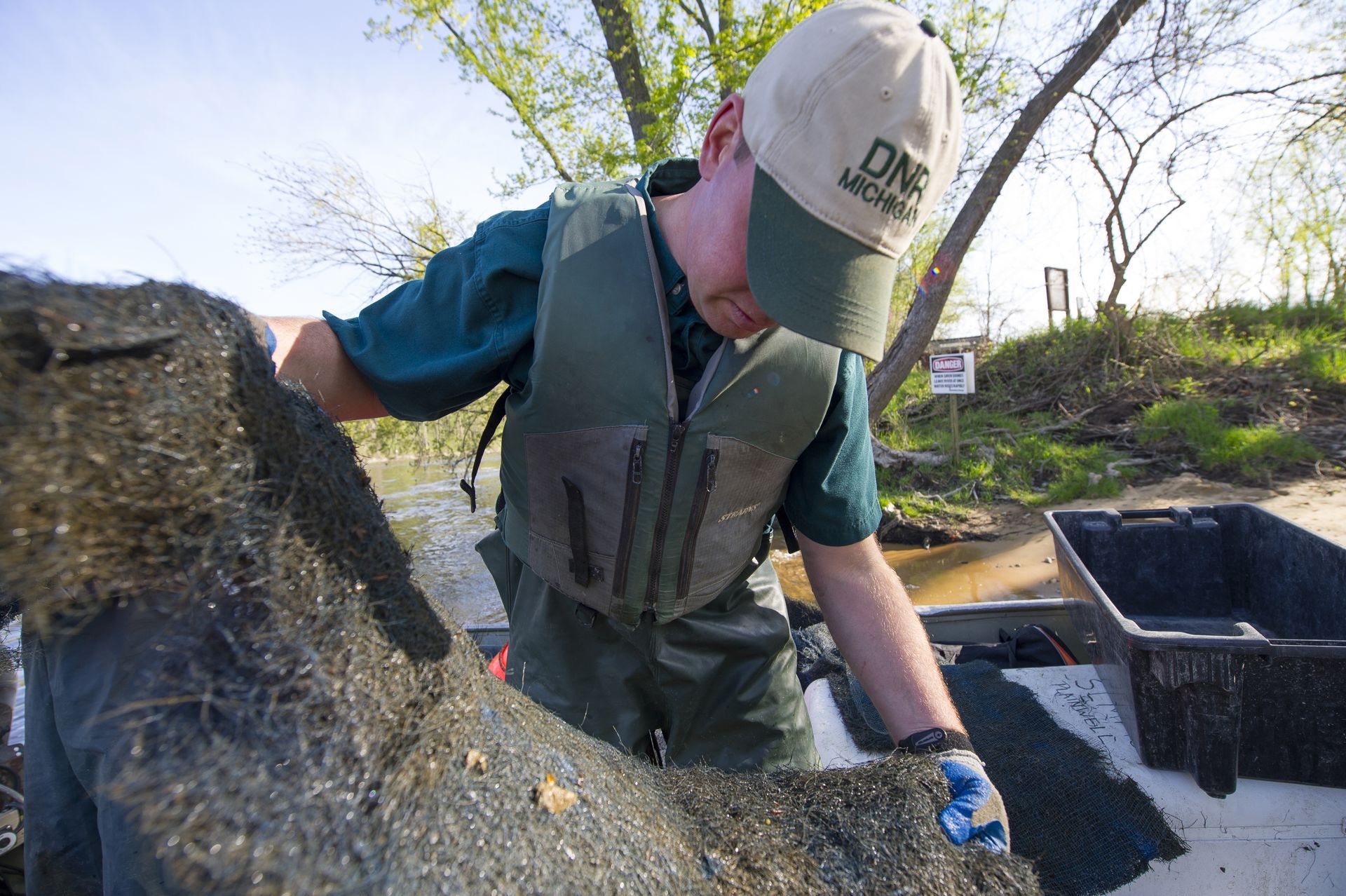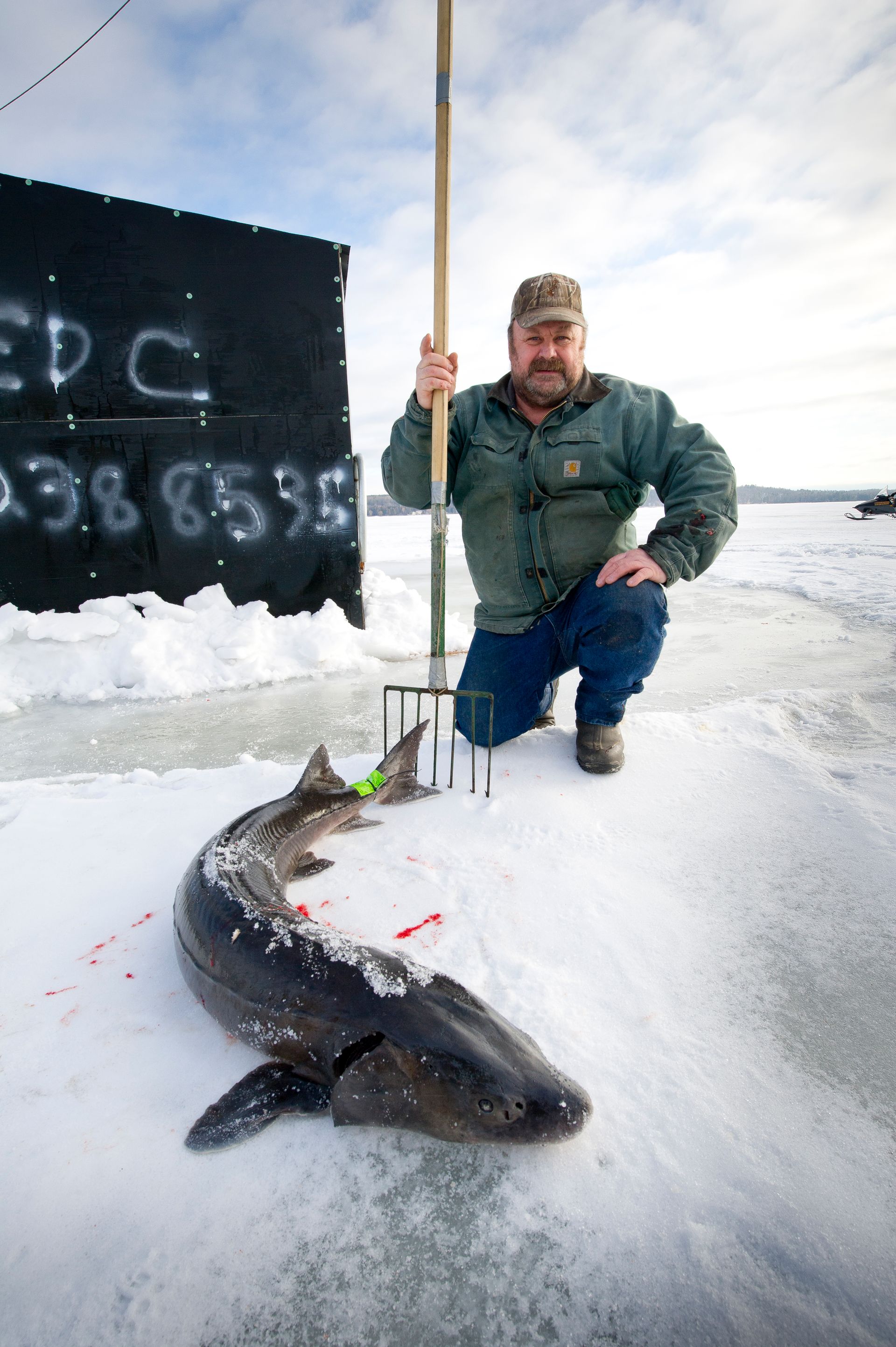The conservation successes of Lake Sturgeon have reached the point of anglers being able to harvest an individual based on regulations. As of 2024, anglers are allowed to harvest one sturgeon per person per year and it must be reported within 24 hours. The fishing and possession seasons can be found in the fishing regulations handbook listing specific lakes and rivers along with the size limits. Black Lake in particular has specific regulations regarding reporting possession and prohibiting spear fishing. These limitations on possession and size of various populations are in place to further conserve and ensure there is enough diversity to perpetuate the species.
If a sturgeon is found with a tag, do not remove the tag. Some fish have a visible or internal tag or fin clips, these can be reported to Eyes in the Field when found with data about the fish to the Michigan DNR.
Right: Sturgeon Spearing on Black Lake. Courtesy of Michigan Department of Natural Resources.





